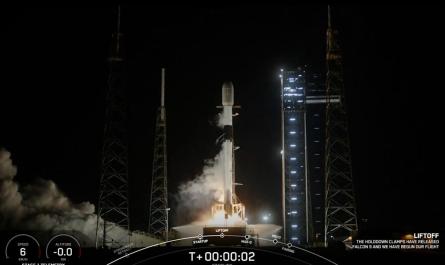Large swaths of the earth are drying out and affecting the ability of plants and animals to survive, according to a United Nations report released Monday at talks as countries work to address the problem.
The report was released at the UN summit in Riyadh, Saudi Arabia, on combating desertification – once-fertile areas turning into deserts due to hot temperatures caused by human-caused climate change, water shortages and deforestation. It found that between 1970 and 2020, more than three-quarters of the world’s land area experienced drier conditions than in the previous thirty years.
“The drier climate that is now affecting vast areas around the world will not go back to what it was,” said Ibrahim Thiaw, head of the United Nations Convention to Combat Desertification, which is hosting the talks in Riyadh. “This change is redefining life on Earth.” ”
Trusted news and daily delights straight to your inbox
See for yourself – The Yodel is your destination for daily news, entertainment and feel-good stories.
At the talks, which began last week and are scheduled to end on Friday, nations are discussing how to better help the world deal with droughts – a more urgent water shortage over shorter periods of time – and the more permanent problem of land degradation.
The drying out of the earth has devastating effects
If global warming trends continue, nearly five billion people – including most of Europe, parts of the western US, Brazil, East Asia and Central Africa – will be affected by desiccation by the end of the century, up from a quarter of the world’s population today, the report warned.
UNCCD chief scientist Barron Orr warned that drier land could lead to “potentially catastrophic impacts on access to water, which could push humans and nature even closer to catastrophic tipping points” where humans are no longer able to cope with the harmful effects Reverse the effects of climate change.
Sergio Vicente-Serrano, one of the report’s lead authors, said warming of the atmosphere because burning coal, oil and gas releases climate-damaging emissions is leading to more evaporation from the ground. This makes water less available for people, plants and animals and makes survival more difficult.
Agriculture is particularly at risk because drier land is less productive and affects both yields and the availability of feed for livestock, the report said. This can lead to food insecurity for communities worldwide.
Drought also leads to more migration, as erratic rainfall, land degradation and frequent water shortages make it difficult for regions or nations to develop economically, the report said. The trend is particularly noticeable in some of the driest areas of the world such as southern Europe, the Middle East, North Africa and South Asia.
Address the problem in UN talks – slowly
Negotiators in Riyadh are primarily discussing how the world can best respond to more frequent and damaging droughts.
Jes Weigelt of European climate think tank TMG said it was still a sticking point as countries could not agree on whether rich nations should spend money on drought relief efforts around the world.
The promised money would go toward better forecasting and monitoring systems, as well as the creation of reservoirs and other structures that provide access to water even during extended dry periods.
“The big controversial question is whether we do this (drought response) through a binding protocol at the UN level or whether there are other options we should explore,” Weigelt said. A binding protocol would mean that developed countries could be required to provide financing, among other obligations.
Thiaw, the UNCCD chief, said host Saudi Arabia’s commitment of $2.15 billion from various countries and international banks for drought resilience set the right tone for the meetings. And the Arab Coordination Group – 10 development banks based in the Middle East – has committed $10 billion by 2030 to combat land degradation, desertification and drought.
The funds will help 80 of the most vulnerable countries prepare for increasing drought.
But the UN estimates that droughts cost $125 billion worldwide between 2007 and 2017.
“As hosts, our primary goal is to facilitate the critical discussions that are taking place,” said Osama Faqeeha, Saudi Arabia’s junior environment minister and adviser to the talks’ presidency. “These crises know no borders.”
Permanent solutions for a dry world
While drought can be very damaging, Thiaw wrote in Monday’s report, recovery is possible. But he called the drying of the land “an inexorable threat that requires sustained adaptation measures.”
Longer-term solutions – such as curbing climate change – are not a major topic of discussion at the summit in Riyadh. Host Saudi Arabia has long been criticized by some other nations and climate analysts for delaying progress on curbing fossil fuel emissions in other negotiations.
The UN report recommends that countries improve their land use practices and use water more efficiently. This includes adopting measures such as growing crops that require less water and more efficient irrigation methods – such as drip irrigation, which slowly adds water to plants to minimize evaporation – on a much larger scale.
She also suggests better monitoring to help communities plan ahead, as well as large-scale reforestation projects to protect the earth and its moisture.
Andrea Toreti, one of the report’s lead authors, said that solving the problem – like tackling climate change or biodiversity loss – will require better cooperation between countries.
It “requires coordinated international action and an unwavering commitment,” he said. ___
Follow Sibi Arasu on X at @sibi123
___
Associated Press climate and environmental reporting receives funding from several private foundations. AP is solely responsible for all content. At AP.org you can find the AP Standards for Working with Charities, a list of supporters and supported areas.


